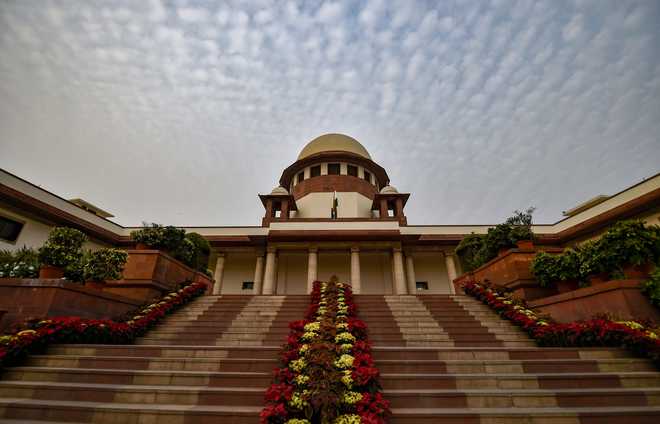Parliament passes Bill to increase number of SC judges from 30 to 33
Tribune News Service
New Delhi, August 7
Parliament on Wednesday passed a Bill to increase the number of Supreme Court judges from 30 to 33, excluding the Chief Justice of India, with a view to reduce pendency of cases which touched 59,696 on July 1, 2019.
Cleared by the Union Cabinet on July 31 and passed by the Lok Sabha on August 5, “The Supreme Court (Number of Judges) Amendment Bill, 2019? was moved by Law Minister Ravi Shankar Prasad for consideration and return. He urged the House to consider it.
Maintaining that the opposition didn’t have any objection to it, Leader of the Opposition Ghulam Nabi Azad said members wanted to discuss it as “We normally do not discuss judiciary…We get chance once in a decade or six months…We would also want to know about the judiciary.”
As Chairman M Venkaiah Naidu pointed out that it was a Money Bill, Prasad said the Government was willing to have a discussion on the Judiciary in November during Winter Session of Parliament.
The Supreme Court (Number of Judges) Amendment Act has been amended and in section 2 of the Act, the word “thirty”, has been substituted with the word “thirty-three”.
Only recently, the Supreme Court managed to fill all the posts of judges after a gap of almost a decade but despite that there were almost 60,000 cases pending there.
The passage of the Bill comes a month after Chief Justice of India Ranjan Gogoi wrote to Prime Minister Narendra Modi seeking to increase the strength of judges in view of increasing pendency of cases in the top court due to filing of more fresh cases.
The CJI had also written about increasing the retirement age of high court judges from 62 years to 65 years but the government hasn’t acted upon this suggestion. He had highlighted that due to paucity of judges, the required number of Constitution Benches to decide important cases involving questions of law were not being set up.
“You would recall that way back in 1988, about three decades ago, the judge strength of the SC was increased from 18 to 26, and then again after two decades in 2009, it was increased to 31, including the CJI, to expedite disposal of cases to keep pace with the rate of institution,” the CJI had written.
The original Constitution of 1950 envisaged a Supreme Court with eight judges, including the CJI, leaving it to Parliament to increase the sanctioned strength of judges.
Initially, the Supreme Court judges used to sit together to hear the cases presented before them. As the arrears of cases began to cumulate, Parliament increased the number of Judges from 8 in 1950 to 11 in 1956, 14 in 1960, 18 in 1978 and 26 in 1986.
Supreme Court of India came into existence on 26th January, 1950 and became functional after two days. The inauguration took place in the Chamber of Princes in the Parliament building where the Federal Court of India sat for 12 years between 1937 and 1950.
Unlock Exclusive Insights with The Tribune Premium
Take your experience further with Premium access.
Thought-provoking Opinions, Expert Analysis, In-depth Insights and other Member Only Benefits
Already a Member? Sign In Now










